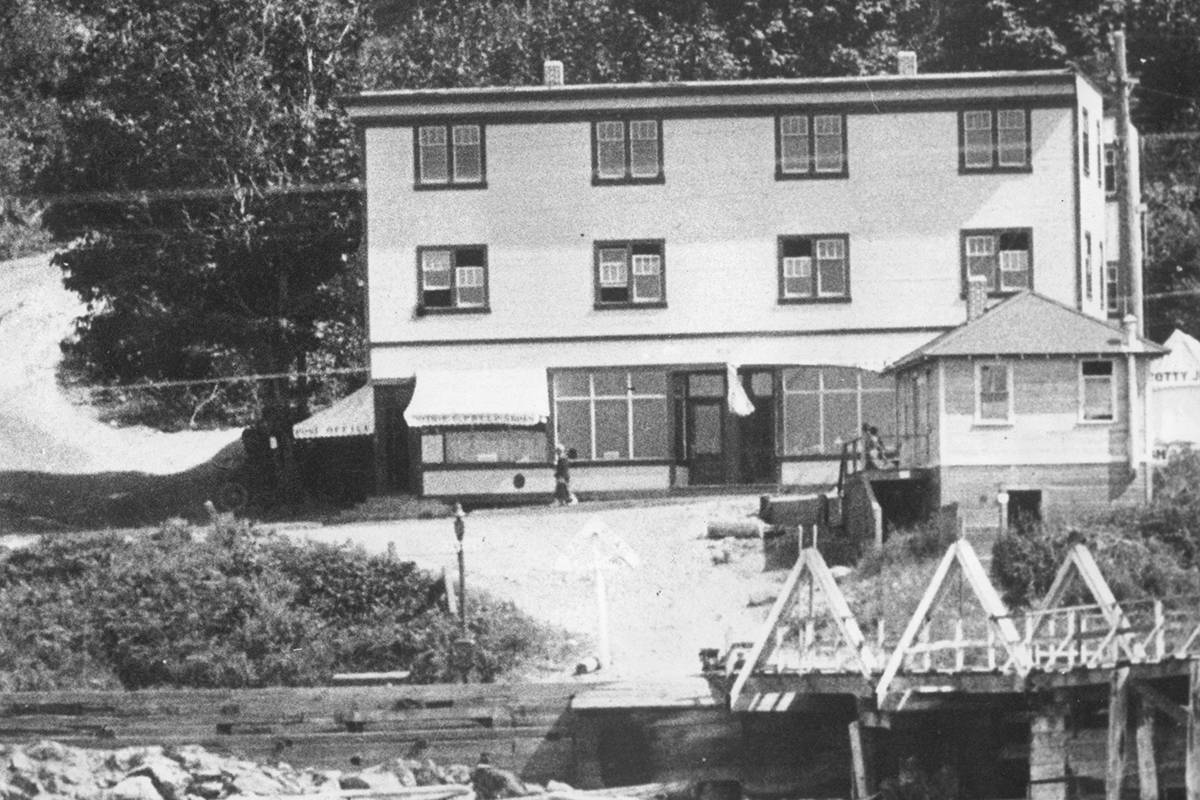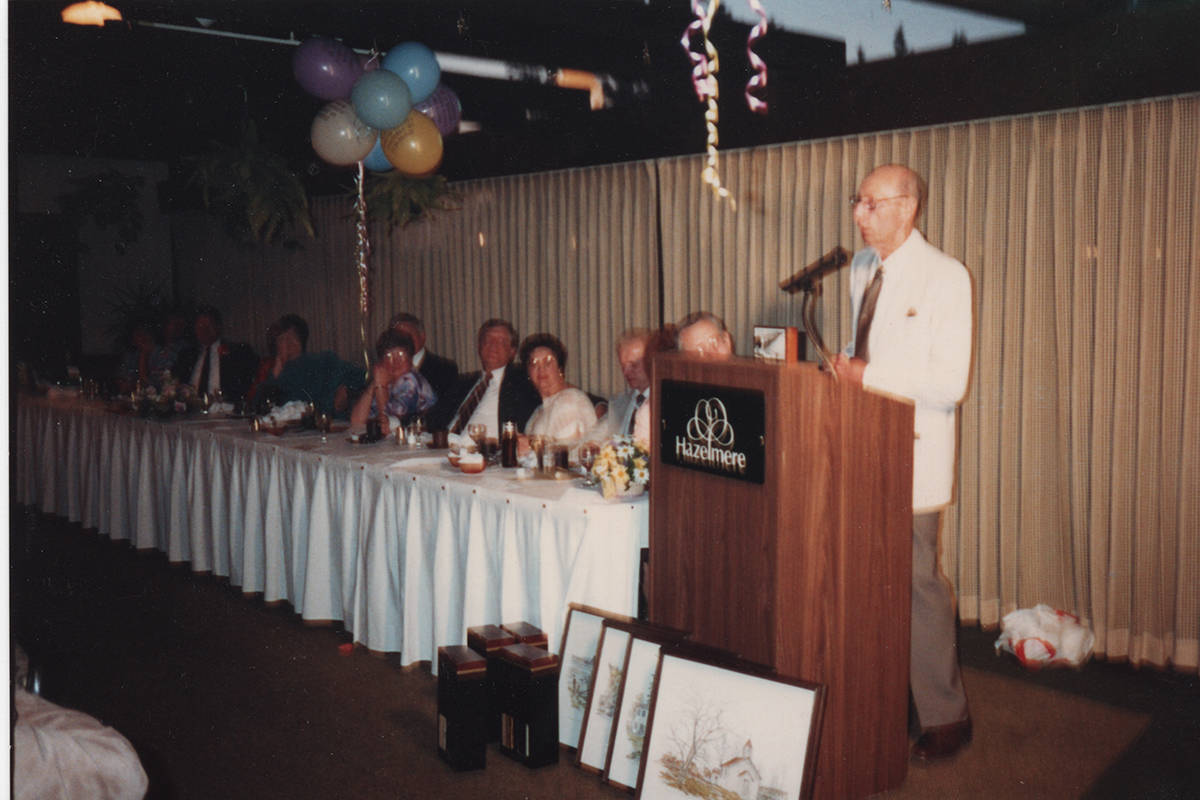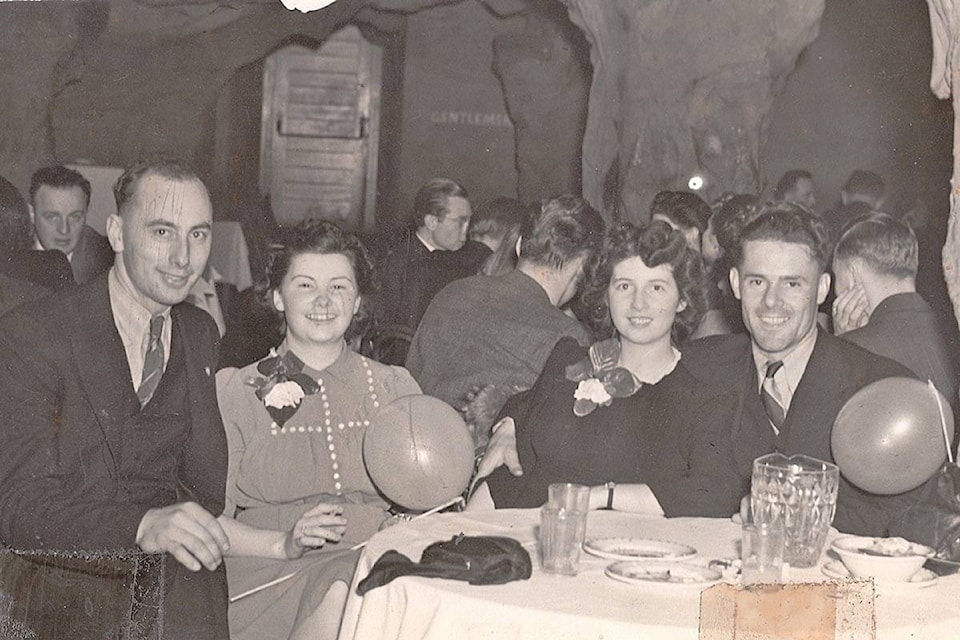It is well-known that White Rock is a ‘hotbed’ of volunteerism. This isn’t a recent phenomenon; it is inherent in its being.
Lloyd North, White Rock’s version of the scarlet pimpernel, is an outstanding early day example. He seemed to be anywhere a helping hand was needed, especially during the austerity of the Great Depression.
Although there is much information in the archives about the public activity of the Norths, little is recorded about the family. We met with North’s widow, Joyce, daughter Lesley, and grandson, Brock Pedersen, to learn more.
In 1930, along with her son, Lloyd, and daughter, Cleta, Jessie North arrived in White Rock, having acquired the Rickard building on the corner of Washington Avenue (Marine Drive) and Martin Street. The three-storey, white frame structure quickly became known as the North Block, and played a significant part in White Rock history.
For instance, the first official meeting of the White Rock Lawn Bowling Club was held in its library room on May 29, 1935. It was here, too, that the Red Cross set up a workroom at the start of the Second World War. In 1939, Doris Hanslow opened her shop, The Knitting Needle, and Dr. Sparks moved his office to the North Building.
Lloyd North was soon immersed in local affairs. He had trained as an engineer, and his skills were a boon to the community. His knowledge proved invaluable when the legion building on the pier caught fire in late August, 1935. North climbed the nearby power pole “to disconnect wires to save the town from darkness and falling wires,” according to the local newspaper.
Two years later, when the White Rock Tennis Club sported the first hard-surfaced tennis court in the Fraser Valley, the work was done by North. He was also a star player of the local badminton club. In 1940, he installed electric lights in the rifle range on Thrift Avenue. He later served as president of the badminton club and the White Rock Amateur Athletic Association.
In 1940, North was appointed chief of the volunteer brigade, and served until he went overseas. He joined the RCAF along with local boys Peter Harraway and Aymerick Vidal, and served in various parts of the world. A short time before he went overseas, he helped save the life of a woman who fell off the pier.
When North returned home in 1945, he married Joyce Short, and they settled in White Rock where they raised three daughters – Janet, Carol and Lesley. An early member of the hospital auxiliary, Joyce served as treasurer soon after the formation of the organization.
North resumed his plumbing and heating business with Lambert Burton. They had installed the plumbing in the original Semiahmoo High School in 1940. When Burton moved away, North and his brother-in-law, Bill Short, opened White Rock Hardware opposite Semiahmoo Park in 1947. A year later, they purchased the hardware business established by Barney Lemieux directly across Washington Avenue from the train depot. In 1957, the old building was torn down, and the first two-storey commercial building in White Rock housed White Rock Hardware.
A bout of polio in 1953 left Joyce’s legs impaired, but her spirit undaunted.
“There are so many others worse off than I am,” she noted at the time. An accomplished seamstress, she made costumes for her daughter‘s fellow pupils.
In 1948, North was appointed to the White Rock Hospital Board, and elected vice-chair in 1952. In that year, he was one of the three-member delegation which received the go-ahead to begin planning the building of the White Rock hospital. He served as chairman of the board in 1955.
Back in 1937, North was appointed charter secretary of the newly formed White Rock Board of Trade. In 1987, he was honoured by the Chamber of Commerce for 50 years of devotion to the betterment of his community. He died in September, 1992.
Joyce North summed up her husband’s accomplishments in a matter-of-fact manner: “He could do anything,” she said.
The public record confirms this assessment.
It is no coincidence that a local journalist had the North family in mind when she wrote, “The real charm of a place when you come right down to it is the calibre of its people.”
The Peninsula’s best-known mother-and-son historians, Lorraine and Hugh Ellenwood, are dedicated to preserving history through the White Rock Museum & Archives. Email archives@whiterockmuseum.ca


